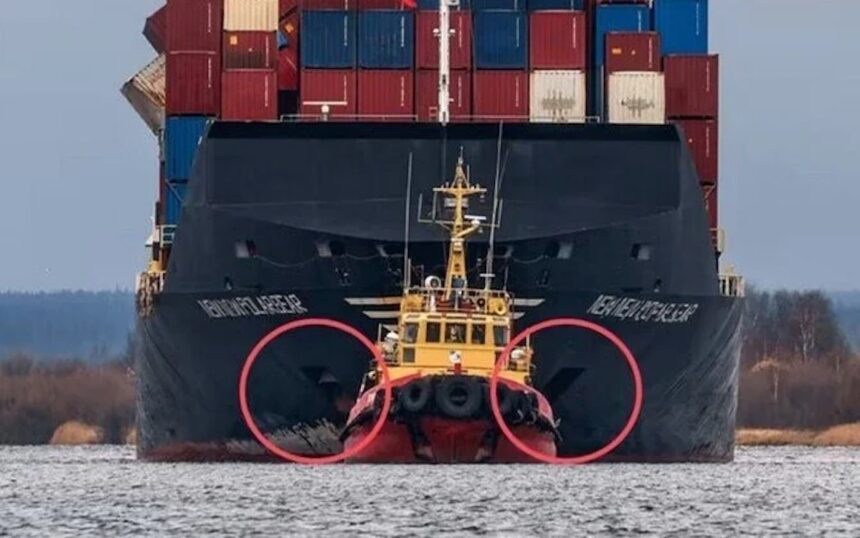The article claims that China may be engaging in “grey zone” warfare on behalf of Russia.
The term “Grey Zone Warfare” refers to actions that are designed to achieve strategic objectives without the use of full-scale conflict and are situated between traditional warfare and peace. These actions include economic coercion, cyber attacks, and covert operations.
The article examines allegations that China may be assisting Russia through these grey zone strategies. This assistance may also include a variety of indirect forms, such as the exchange of intelligence, the provision of economic aid, or the manipulation of global public sentiment.
It also examines specific incidents and activities that suggest Chinese involvement in activities that are advantageous to Russia. Activities that are conducted in the digital domain, economic coercion, and strategic diplomatic initiatives are all included.
These strategies may serve as strategic advantages for both Russia and China. China might support Russia as part of a more comprehensive plan to counter Western influence and increase its geopolitical influence.
If these claims are verified, they could indicate a new era in international relations, in which major powers implement grey zone strategies to achieve their objectives. International responses to crises involving Russia may be influenced by this change, which could confound global security dynamics.
Additional research and analysis are required to confirm the extent of China’s involvement and the implications for global geopolitics, as the article emphasizes.
Is China conducting ‘gray zone’ warfare for Russia?
In October 2023, damage to the Balticconnector gas pipeline between Finland and Estonia knocked it out for six months. Suspicion quickly fell upon a Chinese-owned, Hong Kong-flagged container ship called the Newnew Polar Bear.
Now the South China Morning Post has reported that the Chinese government agrees the anchor of the Newnew Polar Bear severed the pipeline. Chinese authorities add that the damage was accidental and resulted from stormy weather.
That Beijing is taking ownership of this incident is a significant and unambiguously good development. But its full significance may go deeper – and darker.
Beijing generally does not like to admit to its mistakes. The PRC often has preferred to stand on implausible counter-explanations rather than admit fault.
In the infamous 2001 aerial collision incident off Hainan Island, the Chinese government asserted that a relatively nimble Chinese J-8 fighter jet was the victim of sudden, aggressive maneuvering by a US EP-3 – a lumbering, four-engine, propeller-driven aircraft.
Amid a 2011 spate of incidents in disputed areas of the South China Sea in which Chinese vessels harassed Vietnamese oil exploration ships by cutting the cables that towed their survey equipment, in one case the PRC government claimed a Chinese crew cut the cable in self-defense due to aggressive maneuvering by the survey vessel.
China’s admission of responsibility for damaging the Balticconnector is best understood not as an indication of PRC interest in transparency, but rather a case of Beijing deciding it’s counterproductive to continue denying in the face of overwhelming contrary evidence.
As an example, PRC officials denied for years that Beijing had a serious air pollution problem, even claiming the US embassy’s reported air quality measurements were fake news until authorities tired of defending a patently ridiculous position and started talking about solutions.
Another example: On January 11, 2007, without prior announcement, China launched a missile into space that destroyed an aging Chinese satellite, creating a large debris field. The US had stopped such tests in 1985 because of the danger that sort of debris poses to other equipment in space.
The Chinese government drew international condemnation not only for the test but also for refusing to speak about it. Nearly two weeks later, PRC Foreign Ministry spokesperson Liu Jianchao finally confirmed the test, while emphasizing that the incident was a “peaceful use of space” and “does not constitute a threat to any country.”
There are exceptions to the pattern. In some matters, the negative political ramifications of coming clean are so large that the Chinese government will never admit to bad behavior, even if confronted with mountains of incriminating evidence.
This list would include the mass persecution and imprisonment of Uighurs in Xinjiang Province, the massacre of protestors in and near Tiananmen Square in June 1989, and China’s government-sponsored cybercrime.
The Newnew Polar Bear incident is similar to the February 2023 spy balloon incident, in which the Chinese government evidently decided that total denial was untenable so it admitted that the balloon indeed came from China – but claimed that its purpose was innocent (weather monitoring rather than collecting signals intelligence) and that its flight over the US was unintentional.
The NewNew Polar Bear incident appears more darkly ominous if we consider the context.
Some investigators believe the damage was intentional. Estonia’s defense minister questioned how the ship’s crew could have been unaware their anchor was plowing the seabed for a reported 180 kilometers before it hit the pipeline.
Similarly, Finland’s Minister of European Affairs Anders Adlercreutz opined, “I would think that you would notice that you’re dragging an anchor behind you for hundreds of kilometers. I think everything indicates that it was intentional.”
China is a quasi-ally of Russia, and Russia had a motive to punish Finland. At the time of the incident, relations between the two countries were tense because Finland had become a member of the North Atlantic Treaty Organization (NATO) six months prior.
The month the Balticconnector was severed, Finland’s Security and Intelligence Service reported that Russia considered Finland a hostile country and was “prepared to take measures against Finland.”
The Newnew Polar Bear has significant Russian connections. After leaving the damaged area, the ship sailed between China’s east coast and Russia’s Baltic coast using the Northern Sea Route within the Arctic Circle, proving that this route (shorter than going through the Suez Canal) is viable for cargo ships. During part of its voyage, a Russian government-owned icebreaker accompanied the ship.
The ship also changed the name of its registered operator from the Chinese company Hainan Xin Xin Yang to the Russian company Torgmoll, which has offices in Shanghai and Moscow and participates in Belt and Road Initiative projects.
The PRC government can order any Chinese national in the private sector to carry out a national security-related task and that citizen must comply. The percentage of PRC private citizens who actually do side jobs for their government is probably small, but it is clear the PRC government routinely uses the Chinese private sector as a force multiplier:
- Civilian fishing fleets support China’s geopolitical objectives in the South China Sea.
- The PRC enlists some of its private citizens residing abroad to gather intelligence.
- And it relies on civilian businesses to help supply computer hackers who commit cyber crimes under government direction.
China is suspected of doing something similar in the Taiwan Strait. Activity by Chinese fishing boats and excavator equipment regularly cuts undersea communication cables that connect Taiwan with its offshore islands that are very close to the coast of mainland China.
Here, as well, there is a clear motive as Beijing has been carrying out various forms of gray zone warfare against Taiwan for years.
Atlantic Council senior fellow Elisabeth Braw concludes that the rupture of undersea cables serving Taiwan is so “disproportionately frequent” that it “doesn’t look like accidental damage — it looks like harassment of Taiwan.”
Sabotage of undersea internet cables may be a skill China practiced close to home and is now taking farther afield.
There are three possibilities in the NewNew Polar Bear incident:
The best case is that the Balticconnector’s was severed accidentally; Chinese authorities might even be pressuring Chinese shippers to ensure that something similar never happens again because the fallout is embarrassing to China.
Another possibility is that the incident was intentional sabotage directed by some part of the Chinese government but the overall result was negative enough to dissuade China from engaging in similar behavior again.
The worst-case possibility is that we are seeing the beginning of a new form of strategic cooperation between China and Russia.
North Korea is supplying Russia with missiles and artillery ammunition for Putin’s war in Ukraine. Until now, Beijing has avoided going that far to support Putin. Rather, China has been providing non-lethal assistance while PRC officials and the media criticize the United States for “adding fuel to the flames” by arming Ukraine.
But conducting gray zone warfare outside of its claimed sphere of influence and in direct support of Moscow’s interests would be a new aspect of Sino-Russian security cooperation, posing new global challenges by the authoritarian bloc to the US bloc.
If the sabotage of the Balticconnector was indeed intentional, Beijing knowingly jeopardized its attempts to improve relations with Western Europe. This would also raise the question of what Moscow owes Beijing in return.
A parallel form of payback would be some kind of concrete Russian action to help China win a conflict involving Taiwan or the South China Sea.
It may be hoped that the Chinese government’s takeaway from this incident is that openness is not so bad – not that gray zone warfare is made viable by claiming it was an accident.
By: Denny Roy – a senior fellow at the East-West Center in Honolulu.
Source: Asia Times







